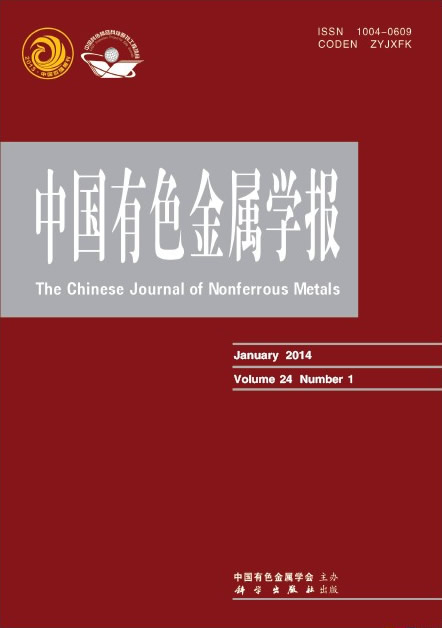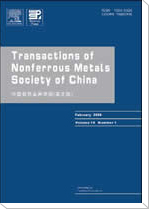(西北工业大学凝固技术国家重点实验室, 西安 710072)
摘 要: 研究了铝、铜、镁等合金化元素对铸态锌基合金组织和室温下阻尼性能的影响,利用悬臂梁法测试了合金的阻尼性能。结果表明,锌铝二元合金随铝含量增加,初生α相增多,共晶体逐渐减少直至消失。镁、铜等合金元素对Zn-27%Al合金α相的大小和分布无大的影响。镁、铜可固溶于基体中,当其含量较高时,分别在组织中形成MgZn2化合物和CuZn5化合物,分布于晶界。铝含量在6%~60%范围内的锌铝合金在铸态下均具有高的阻尼能力;铜、镁等合金化元素的加入降低了Zn-27%Al合金的阻尼性能。Zn-Al系合金的高的阻尼性能是在外部的交变应力作用下,晶界和相界间的粘滞性滑动以及α相发生局部的微塑性变形,使振动能量得以消耗而造成的。
关键字: 锌基合金 合金化元素 阻尼性能
(State Key Laboratory of Solidification Processing, Northwestern Polytecnical University, Xi'an 710072, P. R. China)
Abstract:The effect of Al, Cu, Mg content on microstructure and damping capacity of as-cast zinc based alloy was studied. The damping properties were measured by the cantilever beam technique. Experimental results indicate that as the content of Al increasing in Zn-Al alloy, the content of primary α phase increases, while the content of eutectic decreases gradually and finally disappears completely. The addition of Cu, Mg to Zn-27%Al alloy has no effect on the distribution and the volume fraction of primary α phase. Cu, Mg can solute in Zn-27 %Al alloy, and form intermetallic compound particles MgZn2 and CuZn5, respectively, when their contents are high. When the Al content is in the range of 6%~60%, the zinc-aluminum alloys have high damping capacity. However, Cu, Mg will reduce greatly the damping capacity of Zinc-based alloy. The phase interface slipping between α phase and η phase or the grain boundary viscous sliding may occur when the material is under cyclic loading. Meanwhile, the elastic module of α phase and η phase are different, thus the strain of α phase mismatches that of η phase, which leads to infinitesimal plastic deformation of α phases. Therefore, the effective energy dissipation will be generated in the zinc-aluminum alloy.
Key words: Zinc-based alloy; damping capacity; alloying elements


